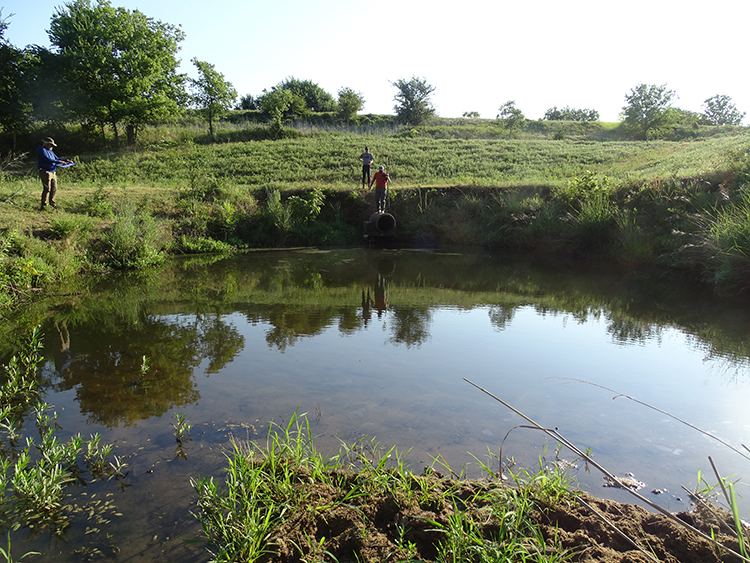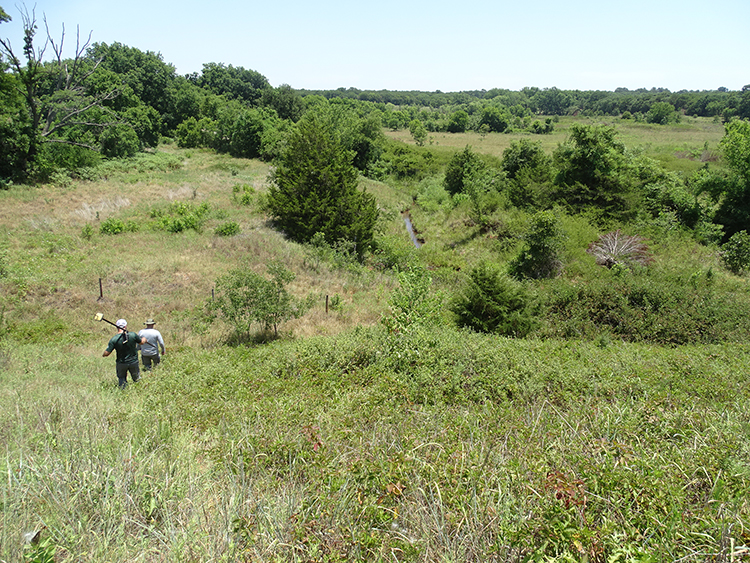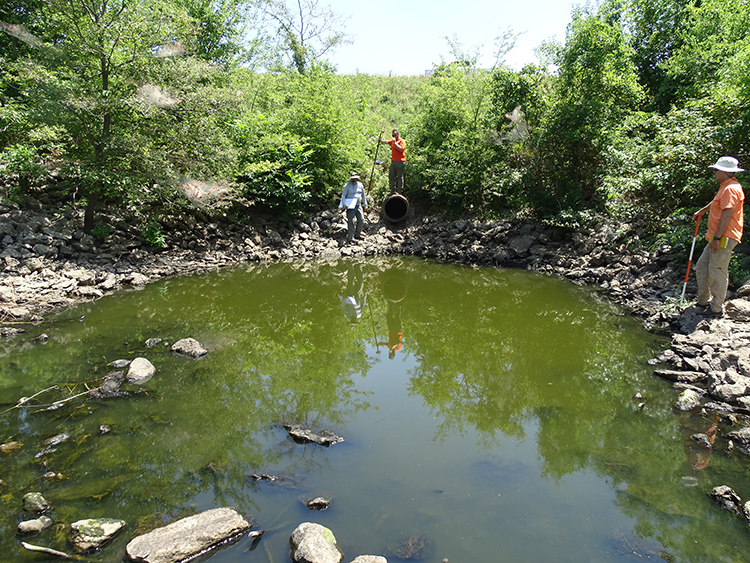NRCS Assesses 20 Watershed Sites to Meet Oklahoma Dam Requirements
Posted on Monday, April 24th, 2023 by Affinis CorpIn Stormwater, Structural, tagged in

In Oklahoma, the U.S. Department of Agriculture’s National Resources Conservation Service (NRCS) had several dam sites that were constructed in the 1960’s. At that time, they were built to meet low-hazard requirements, as there was no development downstream. However, since that time, development has increased downstream, and the structures need to meet the criteria for high-hazard dams.
Affinis was selected, as part of the Ad Astra team, to perform watershed assessments for 20 locations in Oklahoma. We started by conducting field inspections of the existing dams. We captured survey data for the main features of the dam to see if the structures were lining up with the as-built drawings and elevations on file. Other members of our team conducted a hydraulic and hydrologic analysis, as well as an alternative analysis.

As we reviewed the data and developed solutions, we were faced with some dams that had a small footprint. For those, we had to come up with structural alternatives to increase hydraulic capacity that would fit in the dam footprint. We also had to assess any impacts to upstream and downstream development the alternatives may have.

All the information collected was compiled in a dam assessment report. It includes modeling results and solutions to help NRCS meet state dam requirements. This report will play a critical role in determining the next steps. When NRCS moves forward with the improvements, they will use this data to inform the next round of design. It also includes a rough magnitude of cost. This will guide NRCS as they assess the areas with the highest need, while still working within their budget.
This year-long project is expected to be completed in May. At that time, NRCS will have the data and information they need to make an informed decision on the next steps. Our report provides them with a valuable snapshot of the current existing conditions and offers alternatives for rehabilitation, so they can plan how to best allocate their resources.